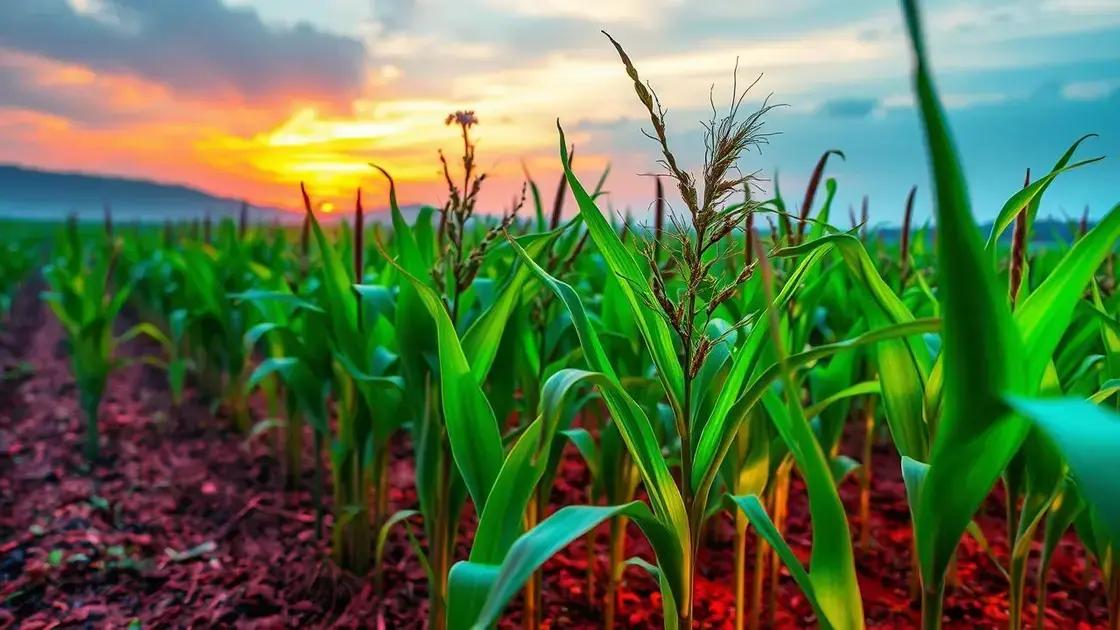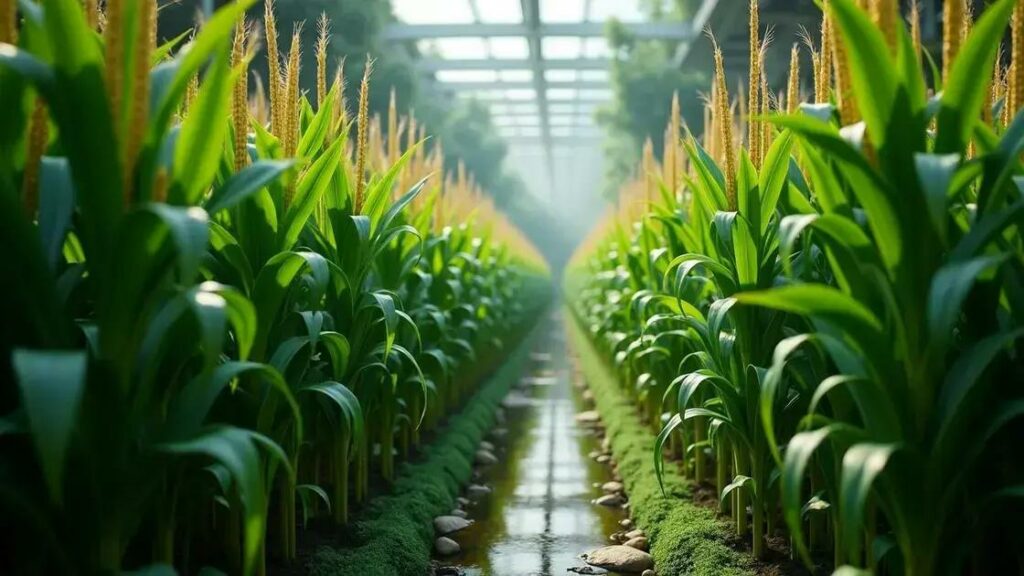How to care for indoor corn plant can seem daunting to many beginners. However, with a few key guidelines, you can ensure a vibrant and healthy indoor garden. Focusing on light, watering, and nutrition will help your indoor corn plant flourish. Dive into these essential tips to make your corn plant thrive.
Table of Contents
ToggleIndoor corn plant light requirements for optimal growth
Indoor corn plant light requirements for optimal growth are essential to ensure your plant thrives. Providing the right amount of light can make a significant difference in its health and growth rate. Here’s what you need to know.
Understanding light needs
Indoor corn plants, also known as Zea mays, flourish in well-lit conditions. Here are the key light requirements for maintaining your corn plant:
- **Direct sunlight:** They prefer bright, indirect sunlight for about 6 hours a day.
- **Artificial lighting:** If natural light is insufficient, consider using grow lights to supplement their light needs.
- **Rotation:** Rotate your corn plant occasionally to ensure even growth and prevent lopsidedness.
Types of light suitable for indoor corn plants
Understanding different light types can help you make the best choice:
- Natural light: Optimal for promoting healthy foliage.
- Fluorescent lights: Effective for seedling growth and can be used during the day.
- LED grow lights: Energy-efficient and provide the full light spectrum.
Creating the perfect environment
Here are some tips to create an optimal lighting environment for your indoor corn plant:
- **Location:** Place your corn plant near a south-facing window to maximize light exposure.
- **Distance from light sources:** Position lights roughly 12-24 inches above the plant to avoid burning.
- **Observe your plant:** Watch for signs of stress, such as yellowing leaves, indicating that light adjustments may be necessary.
Common light-related issues
Here are some issues to look out for:
| Issue | Symptoms | Solutions |
|---|---|---|
| Insufficient light | Thin, leggy growth | Increase light exposure or use artificial lights |
| Excessive light | Brown leaf tips | Move plant farther from direct sunlight or reduce light intensity |
If you’re eager to dive deeper into creating a thriving indoor garden, consider exploring indoor gardening techniques for a wealth of insights.
Discover how to care for indoor corn plant light requirements for optimal growth, ensuring vibrant health and development of your Zea mays.
Effective watering techniques for corn plants

Effective watering techniques for corn plants play a critical role in maintaining the health and vitality of your indoor corn plants. Proper hydration ensures strong root development and prevents common issues like wilting and root rot.
Understanding watering needs
Indoor corn plants require consistent moisture, but overwatering can lead to problems. Here are key factors to consider:
- **Frequency:** Water your corn plant approximately once a week, adjusting based on humidity and temperature conditions.
- **Drainage:** Ensure your pot has drainage holes to prevent water from accumulating at the bottom.
- **Soil moisture:** Check the top inch of soil; if it’s dry, it’s time to water.
Methods for effective watering
Here are recommended methods to keep your corn plant hydrated:
- Bottom watering: Place the pot in a shallow dish of water for 30 minutes to allow the soil to absorb moisture from below.
- Watering can: Use a watering can with a narrow spout to control the flow and prevent soil disturbance.
- Soil moisture meter: Consider using a moisture meter to accurately gauge when your plant needs water.
Signs of overwatering and underwatering
Observing your plant’s condition is crucial. Here are signs to look for:
| Condition | Symptoms |
|---|---|
| Overwatering | Yellowing leaves, mushy stems, foul odor from soil |
| Underwatering | Wilting leaves, dry soil, browning leaf edges |
Watering tips for beginners
Here are some additional practical tips:
- **Use room temperature water:** Cold water can shock the roots. Let water sit out for a few hours before using it.
- **Water early in the day:** This helps reduce evaporation and allows plants to absorb moisture before the heat of the day.
- **Regular monitoring:** Adjust your watering schedule as the seasons change; indoor plants may need less water in winter.
If you want to further enhance your indoor gardening skills, consider exploring indoor gardening techniques for valuable insights.
Learn effective watering techniques for corn plants to ensure healthy growth, optimal hydration, and strong root systems.
Nutrient needs and fertilization schedules for indoor corn plants
Nutrient needs and fertilization schedules for indoor corn plants are vital for promoting healthy growth and vibrant foliage. Understanding which nutrients your corn plant requires can significantly enhance its overall health.
Essential nutrients for indoor corn plants
Corn plants need a balanced mix of nutrients to thrive. Key nutrients include:
- Nitrogen (N): Crucial for leaf growth and overall plant development.
- Phosphorus (P): Supports root development and flowering.
- Potassium (K): Enhances overall plant health and disease resistance.
- Micronutrients: Iron, magnesium, and calcium contribute to various functions in the plant.
Recommended fertilizers
Choosing the right fertilizer is essential. Consider these options:
- Slow-release granules: These provide nutrients over time and reduce the risk of over-fertilization.
- Liquid fertilizers: Useful for quick absorption, ideal for boosting growth during the growing season.
- Organic options: Compost and worm castings offer natural nutrients without chemicals.
Fertilization schedule
Establishing a fertilization schedule can help ensure your indoor corn plant gets the nutrients it needs. Here’s a simple guide:
| Time of year | Fertilization Frequency |
|---|---|
| Spring | Every 4-6 weeks, start with a balanced fertilizer to promote growth. |
| Summer | Every 6-8 weeks with a nutrient-rich liquid fertilizer. |
| Fall | Reduce fertilization; only do so if the plant looks weak. |
| Winter | Typically no fertilization; allow the plant to rest. |
Signs of nutrient deficiencies
Watch for these symptoms that may indicate nutrient deficiencies:
- **Yellowing leaves:** Often a sign of nitrogen deficiency.
- **Poor root development:** Indicates a lack of phosphorus.
- **Wilting or browning leaves:** A possible potassium deficiency.
For more insights on caring for your indoor plants, consider exploring indoor gardening techniques to enhance your gardening skills.
Discover the nutrient needs and fertilization schedules for indoor corn plants, ensuring healthy growth and vibrant foliage for your Zea mays.
In conclusion
Caring for indoor corn plants requires a dedicated approach to various aspects, including light requirements, effective watering techniques, and nutrient management.
By understanding these essential factors, you can ensure your Zea mays thrives in your home. Remember to monitor your plant regularly, adjust care strategies as needed, and always seek additional resources to enhance your indoor gardening skills.
For further tips on enhancing your indoor garden, check out community resources for expert advice and shared experiences.

